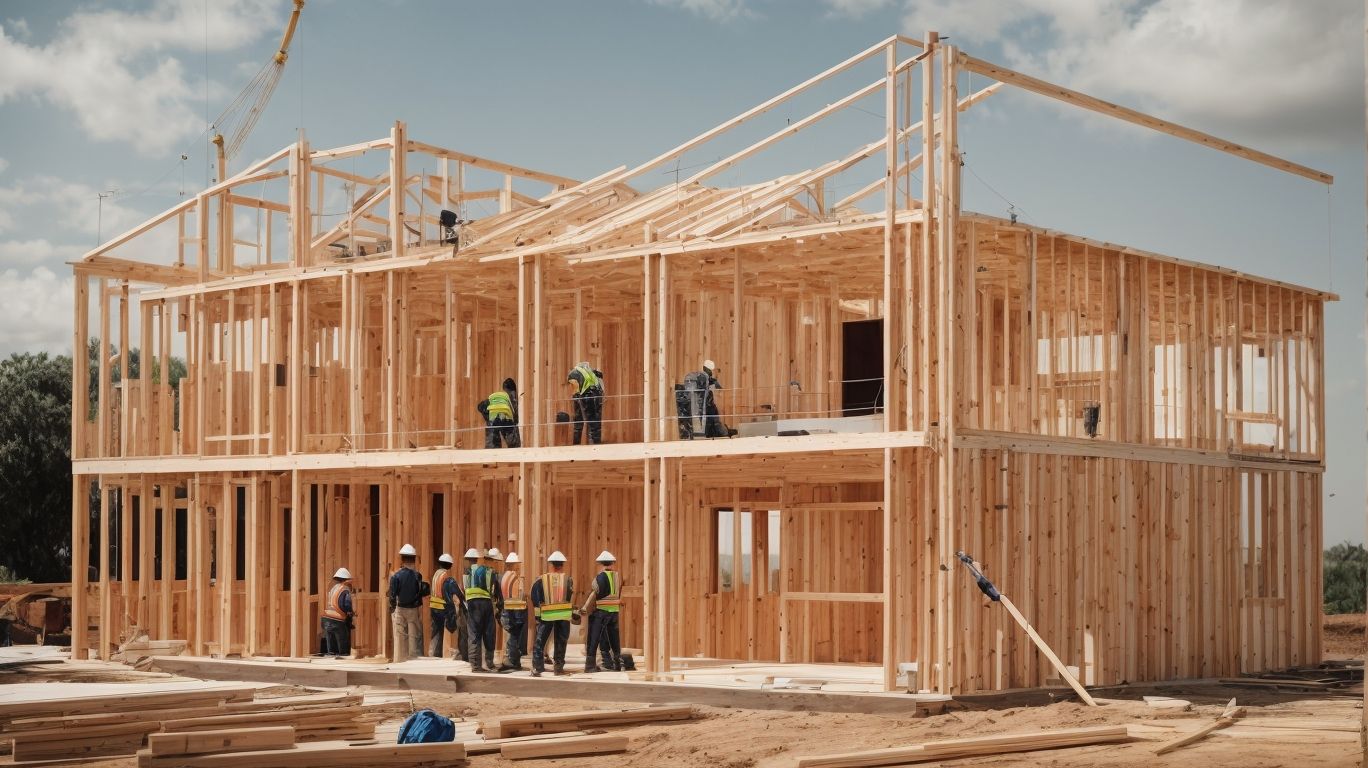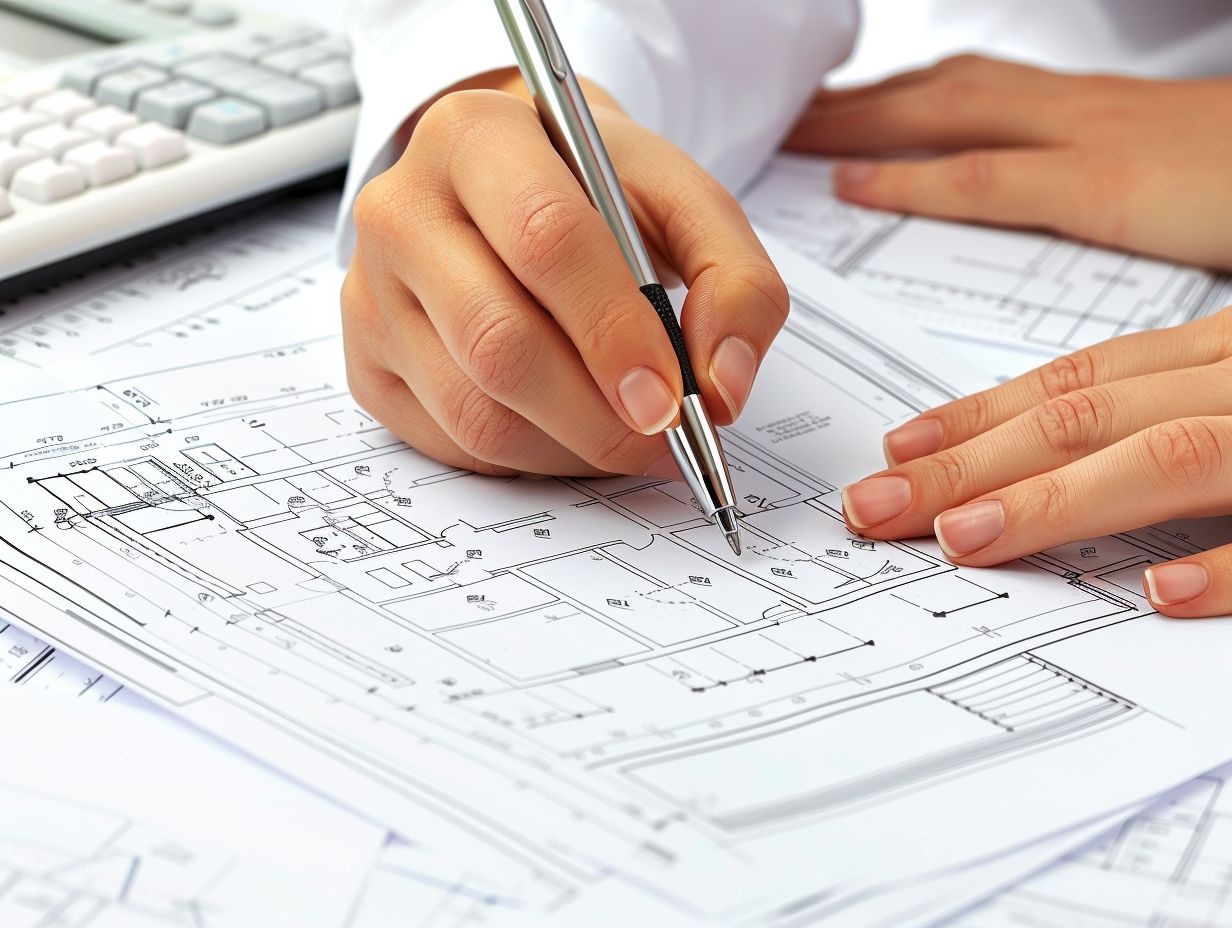
Safety First: The Vital Role of Engineers in Home Remodeling
In the world of home remodeling, the importance of safety cannot be overstated. Whether you’re considering a small renovation or a major overhaul, ensuring the safety of your home and the people within it should be a top priority. This is where engineers play a vital role, bringing their expertise and knowledge to the table to ensure that every aspect of the remodeling process is carried out with the highest standards of safety in mind.
In this article, we will delve into the crucial role of engineers in home remodeling, exploring their qualifications, responsibilities, and the processes they oversee. We will also uncover the common safety measures implemented by engineers and examine the cost considerations of hiring an engineer for your home remodeling project. So, join us as we explore the essential role of engineers in ensuring the safety and success of your home remodeling endeavors.
The Importance of Safety in Home Remodeling
Safety plays a crucial role in home remodeling, ensuring the well-being of individuals involved in construction and renovation projects as well as the structural integrity of the building.
Implementing safety measures in home remodeling not only protects workers and residents from potential accidents but also ensures compliance with building codes and regulations. Risk assessment and adherence to industry best practices are integral to achieving project success while maintaining high safety standards.
By prioritizing safety, homeowners and contractors can mitigate potential hazards, reduce liabilities, and create a secure environment for all involved in the remodeling process.
Why is Safety Important in Home Remodeling?
Safety holds paramount importance in home remodeling as it mitigates potential hazards, ensures regulatory compliance, and safeguards the well-being of everyone involved in the renovation process.
Prioritizing safety standards in home remodeling not only reduces the risk of accidents and injuries but also promotes a secure environment for contractors, homeowners, and visitors.
Compliance with safety regulations, such as proper handling of hazardous materials and electrical safety, is essential to avoid legal repercussions and ensure the structural integrity of the renovated space.
Integrating safety training and risk assessment protocols into the remodeling process fosters a culture of proactive hazard prevention, ultimately enhancing the overall well-being of individuals.
The Role of Engineers in Home Remodeling
Engineers play a vital role in home remodeling, bringing professional expertise to design, project management, and ensuring compliance with safety protocols and industry best practices.
Their contributions extend to conducting thorough risk assessments to identify potential hazards and ensure the safety of the remodeling process. By leveraging their technical knowledge, engineers can offer innovative design solutions that not only enhance the aesthetic appeal of the home but also optimize functionality and structural integrity.
Their involvement in project management ensures smooth coordination among various trades, adherence to timelines, and cost-effective implementation, ultimately leading to successful and safe remodeling projects.
What Qualifications Do Engineers Have?
Engineers involved in home remodeling possess specialized qualifications and professional expertise in ensuring compliance with safety regulations, conducting inspections, and upholding quality assurance standards.
Their knowledge encompasses a deep understanding of building codes, structural integrity, and the integration of safety protocols into all aspects of the remodeling process. By staying updated on industry standards, engineers are able to navigate complex compliance requirements and ensure that all renovations meet safety and quality benchmarks.
Their crucial role includes conducting thorough inspections to identify any potential hazards or deviations from regulations, and implementing corrective measures to guarantee the safety and structural stability of the remodeled homes. Their expertise also extends to coordinating with regulatory authorities to facilitate necessary approvals and certifications, underscoring their dedication to compliance and safety in home remodeling projects.
What Are the Responsibilities of Engineers in Home Remodeling?
Engineers in home remodeling are responsible for project management, conducting risk assessments, ensuring safety compliance, and upholding structural stability through safety training and adherence to safety standards.
Their expertise in project management enables them to coordinate various aspects such as budgeting, scheduling, and resource allocation, ensuring smooth progress. Engineers meticulously assess potential risks, anticipate challenges, and devise solutions to mitigate them, ultimately enhancing the safety and success of the remodeling project.
By continually monitoring safety compliance and adhering to industry standards, they uphold the integrity of the structure and prioritize the well-being of the occupants. Their pivotal role in maintaining structural stability through meticulous planning and implementation underscores the importance of their expertise in home remodeling projects.
The Process of Home Remodeling with an Engineer
The process of home remodeling with an engineer involves several key stages, including:
- The initial consultation
- Planning and design phase
- Obtaining permits and approvals
- Construction and inspection
- Final approval and sign-off
During the initial consultation, the engineer will assess the existing structure and discuss the homeowner’s vision for the remodel. In the planning and design phase, the engineer will create detailed plans and specifications that meet building codes and regulations. Once the plans are finalized, the engineer will assist in obtaining the necessary permits and approvals from local authorities.
Throughout the construction phase, the engineer will provide oversight to ensure that the work complies with the approved plans. After completion, the engineer will conduct inspections to verify that the remodel meets safety and quality standards, culminating in the final approval and sign-off.
Initial Consultation
The initial consultation with an engineer for home remodeling involves:
- A comprehensive safety assessment
- Discussions on compliance with building codes
- The establishment of risk management strategies and safety protocols
This consultation is integral to ensure that the remodeling project adheres to safety standards and regulations, mitigating potential risks and ensuring the well-being of occupants and workers. The safety assessment allows the engineer to identify any existing hazards and develop solutions to address them.
Compliance discussions cover legal requirements, ensuring that the project meets all necessary codes and regulations. The formulation of risk management strategies and safety protocols outlines proactive measures to prevent accidents and ensure a secure remodeling process.
Planning and Design Phase
During the planning and design phase, the engineer focuses on ensuring the structural integrity of the remodel, evaluating electrical systems, and addressing plumbing considerations to meet safety standards and building codes.
They work closely with architects and contractors to develop plans that comply with electrical codes, ensuring the proper placement of outlets and assessing the capacity of the existing electrical system to support the remodel.
The engineer conducts thorough assessments of the plumbing layout, ensuring efficient water distribution and compliance with safety standards to prevent potential hazards. Their expertise in structural analysis helps in identifying potential weaknesses and proposing solutions to ensure the safety and integrity of the renovated space.
Obtaining Permits and Approvals
The engineer facilitates the process of obtaining permits and approvals, ensuring compliance with safety measures and coordinating inspections to adhere to building codes and regulations for the remodeling project.
By working closely with local authorities and regulatory bodies, they navigate the complex landscape of building codes and safety regulations to ensure that the remodeling project meets all necessary standards. Their attention to detail and knowledge of construction laws allow them to oversee the inspections and address any potential compliance issues, ultimately contributing to the safety and structural integrity of the renovated property.
In addition, the engineer’s expertise in evaluating and interpreting building codes aids in the creation of designs that not only meet aesthetic preferences but also fulfill essential safety requirements.”
Construction and Inspection
During the construction phase, the engineer ensures hazard prevention measures are in place, conducts quality assurance checks, and oversees code enforcement to maintain safety standards and structural integrity.
They are responsible for evaluating potential hazards such as electrical wiring issues, unstable structures, or improperly installed support beams, and implementing measures to mitigate these risks. The engineer meticulously inspects materials and construction techniques to uphold quality standards, ensuring that all work meets building codes and regulations. This attention to detail and thoroughness contributes significantly to the overall safety and longevity of the remodeled home.
Final Approval and Sign-off
The engineer oversees the final approval and sign-off process, ensuring compliance with safety management protocols and the proper documentation of safety measures implemented throughout the home remodeling project.
They work closely with the project team to review all safety documentation and ensure that it aligns with industry standards and regulations. The engineer conducts on-site inspections to verify that safety measures are effectively implemented and meet the required criteria. They also document any changes or updates made to safety protocols during the remodeling process, providing a comprehensive record of safety compliance.
Through their meticulous attention to detail, the engineer plays a critical role in promoting a secure and compliant environment for the homeowners.
Common Safety Measures Implemented by Engineers in Home Remodeling
Engineers implement various safety measures in home remodeling, including:
- Structural analysis and reinforcement
- Electrical and plumbing safety checks
- Fire safety precautions
- Hazard identification
- Compliance with building codes and regulations
These safety measures are crucial in ensuring that the renovated or remodeled homes meet necessary safety standards. Structural analysis involves assessing the integrity of load-bearing elements and reinforcing them as needed to enhance stability. Electrical and plumbing safety checks are conducted to prevent potential hazards and ensure proper functionality. Fire safety precautions encompass installing smoke detectors, fire extinguishers, and ensuring adequate escape routes. Hazard identification involves thorough inspections to detect and mitigate potential risks, while strict compliance with building codes ensures that the remodeling adheres to legal safety requirements.
Structural Analysis and Reinforcement
Engineers conduct thorough structural analysis and reinforcement to ensure the integrity and stability of the renovated structure, employing risk assessment strategies to address potential vulnerabilities.
They carefully assess the existing framework, identifying areas that may need additional reinforcement to withstand potential structural loads. By employing advanced technology and software, they simulate various scenarios to measure the structure’s stability, ensuring that the renovations meet safety standards. Their focus on risk assessment involves considering potential environmental factors, such as seismic activity or extreme weather conditions, to fortify the structure against unforeseen events. Their meticulous approach prioritizes structural integrity, providing homeowners with peace of mind and long-term safety.
Electrical and Plumbing Safety Checks
Engineers conduct meticulous electrical and plumbing safety checks to ensure compliance with safety standards and regulations, prioritizing thorough safety inspections to mitigate potential hazards.
They start by carefully examining the electrical wiring to identify any faulty connections, outdated systems, or potential fire hazards. In the case of plumbing, they meticulously inspect pipes, fittings, and fixtures for leaks, corrosion, and proper ventilation. This systematic approach ensures that all aspects of the home’s electrical and plumbing systems adhere to safety codes, promoting a secure and hazard-free environment for homeowners.
Fire Safety Precautions
Engineers implement robust fire safety precautions, focusing on hazard prevention and strict adherence to safety compliance and protocols to safeguard the renovated property and its occupants.
Their approach includes thorough inspections to identify potential fire hazards and the integration of safety protocols into the remodeling process. By staying updated with the latest safety standards and regulations, engineers ensure that the home renovation meets all necessary safety requirements. They prioritize the installation of fire-resistant materials and efficient escape routes, emphasizing the significance of proactive measures in minimizing fire risks and protecting the occupants’ well-being.
Hazard Identification and Mitigation
Engineers prioritize thorough hazard identification and effective mitigation strategies, incorporating rigorous risk management and safety assessment to address potential dangers during the remodeling process.
This emphasis on hazard identification and mitigation is crucial in ensuring the safety of the occupants and the long-term structural integrity of the remodeled home. By proactively assessing potential risks and formulating robust mitigation plans, engineers can help prevent accidents and ensure that the remodeling process proceeds smoothly. Their focus on risk management also encompasses measures to protect the surrounding environment and community.
Through meticulous safety assessments, engineers can pinpoint potential hazards and implement targeted solutions to address them efficiently, promoting a secure and hazard-free remodeling experience.
Compliance with Building Codes and Regulations
Engineers ensure strict compliance with building codes and safety regulations, prioritizing code enforcement and adherence to regulatory standards to uphold the safety and quality of the remodeling project.
Their dedication to staying abreast of the latest safety regulations and building codes is evident in their meticulous attention to detail throughout the remodeling process. By integrating innovative solutions hand in hand with compliance, they strive to create not only aesthetically pleasing spaces but also ones that are inherently safe and in line with industry standards.
This unwavering commitment to following protocols and regulatory guidelines ensures that the construction and remodeling projects meet and often exceed the requisite standards, ultimately safeguarding the occupants’ well-being and the long-term integrity of the structures.
The Cost of Hiring an Engineer for Home Remodeling
The cost of hiring an engineer for home remodeling varies based on factors such as the scope of the project, the engineer’s professional expertise, their focus on safety compliance, and the assurance of high-quality workmanship.
These cost considerations play a significant role in ensuring that the remodeling project meets safety regulations and quality standards. The scope of the project, including its size and complexity, directly impacts the overall cost. The engineer’s expertise and experience in handling similar projects can influence the pricing.
Adherence to safety compliance protocols and the assurance of maintaining high-quality workmanship throughout the remodeling process also contribute to the overall cost. Therefore, it’s essential to thoroughly analyze these factors to make informed decisions when hiring an engineer for home remodeling.




No Comments